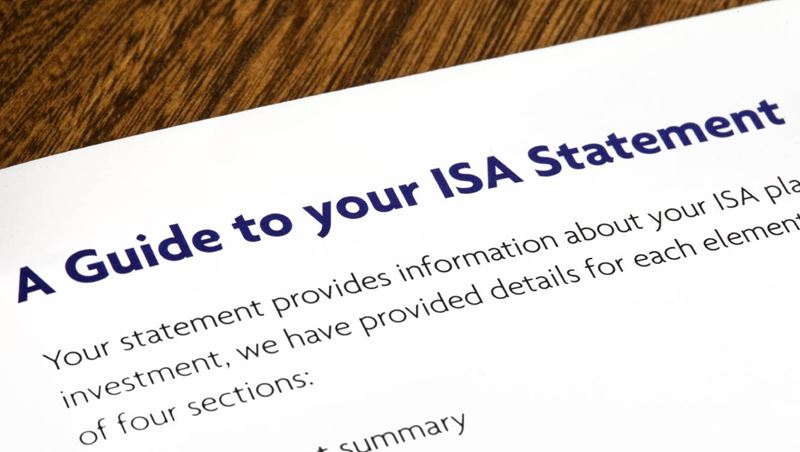

Your ISA is a cornerstone of tax-efficient saving during your lifetime, but have you ever wondered what happens to that carefully built-up pot of money after you're gone? Understanding these rules is key to effective estate planning.
We'll explain how your ISA can continue to grow tax-free after your death, why passing it to a spouse is exempt from inheritance tax, and the rules that might allow your ISA funds to keep their tax-free status.
What’s on this page?
ISAs can continue to hold assets and potentially grow after death under what’s called the ‘continuing ISA’ status. But no further contributions can be made. These rules, like most of the rules about ISAs after death, apply whether it’s a cash ISA or a stocks and shares ISA.
Some paperwork will need to be completed before money or funds can be accessed from the ISA. The provider must close the ISA three years and one day after the date of death, even if the estate has not yet been fully settled in that time.
Or the executor of your estate may close it earlier once the administration of your estate is completed. The tax-free benefits of an ISA continue while the account is open.
When the account is closed, the ISA can be cashed in or transferred to the beneficiary, depending on how the estate is administered and the ISA provider. The money or assets are then at risk of losing their tax-free status.
While ISAs are incredibly tax-efficient during your lifetime, they form part of your estate for IHT purposes.
So, although ISAs are free from income tax and capital gains tax while the account holder is alive, their value on death could contribute to an IHT liability if the total value of the estate means it is liable for IHT.
If the ISA is passed to your spouse or civil partner, inheritance tax doesn’t apply. Assets left to a surviving spouse are fully exempt from IHT.
As well as a transfer to a spouse being free of inheritance tax, the surviving spouse is eligible for a special one-off ISA allowance, known as the additional permitted subscription (APS). That means they won’t have to pay any tax on the interest, or any dividends tax or capital gains tax if it’s a stocks and shares ISA.
Sarah Coles, personal finance expert at Hargreaves Lansdown, explains that the APS is equal to the value of cash or investments passed on, or the value of the ISA on the date of death – whichever is higher. “It means the inheriting spouse or civil partner can wrap everything back up in an ISA without using up their own annual allowance.”
That’s especially useful if there’s a significant amount in your ISA that would go over the annual allowance. The APS is equal to the value of the ISA on the date of the holder’s death, or the value of the assets when the account is closed, whichever is higher.
This allows the surviving partner to benefit from any growth in the ISA’s value during the administration of the estate. For a cash ISA, the allowance must be used within three years of the date of death, or within 180 days after administration of the estate is complete (whichever is later).
For stocks and shares, it needs to be used within 180 days of the spouse receiving the assets. If a spouse inherits cash or investments through an ISA, they can simply reinvest those assets into a new ISA in their own name using the APS.
In some cases they will be able to transfer directly from the existing ISA to an ISA in their own name, but that will depend on the ISA provider. A spouse gets the APS allowance even if the ISA funds are inherited by someone else (such as a child), or if there’s no will in place.
For example, say you die with an ISA worth £30,000. You have stated in your will that this ISA money should be passed on to your child. Your spouse would still get an APS allowance of £30,000 – in addition to their own £20,000 annual ISA allowance. They would have to put in their own money to make use of the allowance.
The APS allowance does not apply if your relationship had broken down or you were in the process of separating. And it doesn’t apply to unmarried partners or other family members included in your will. So if you have a partner you’re not married to, this, as well as the IHT benefits, means it could be worth considering tying the knot.

ISAs can’t be directly inherited by children or grandchildren in the same tax-free wrapper. Assets come out of the ISA on death. If children want to shelter the money in an ISA, they’ll have to put it into their own ISA, and won’t be able to put in more than the £20,000 annual ISA allowance.
Coles explains: “Investments would need to be moved from the deceased person’s ISA into a general investment account held by children. From there, they can move it into an ISA in their own name (using a process known as Bed and ISA). Alternatively, the investments could be sold and passed on as cash.”
Any gains on assets outside the ISA – whether interest on savings or dividends or capital gains on shares – will count towards annual allowances for the relevant tax (for example, personal savings allowance, dividend allowance and capital gains tax allowances). If the amounts are over these allowances, there may be tax to pay.
To make sure your ISAs go to who you want them to after your death, it is a good idea to write a will. This way there will be a legally recognised record of your wishes. Charlene Young, senior pensions and savings expert at AJ Bell, says to remember that it’s the value of the cash and investments held in your ISAs that can be inherited, not the ISA account itself.
“What’s in your ISA will pass to your beneficiaries when you die – these are the people you’ve chosen to inherit your estate in your will. If you don’t leave a valid will, your estate will pay out according to the ‘intestacy’ rules, which might not reflect your wishes,” she says.
An ISA is a tax-efficient way to save or invest in the UK. You won’t pay any tax on growth or interest when you withdraw money.
Adults in the UK can pay up to £20,000 into ISAs each tax year.
There are several types of ISAs, including cash ISAs, stocks and shares ISAs and junior ISAs, each serving different financial goals and preferences.


Let’s make sure you have the right plans in place for you and your loved ones.



